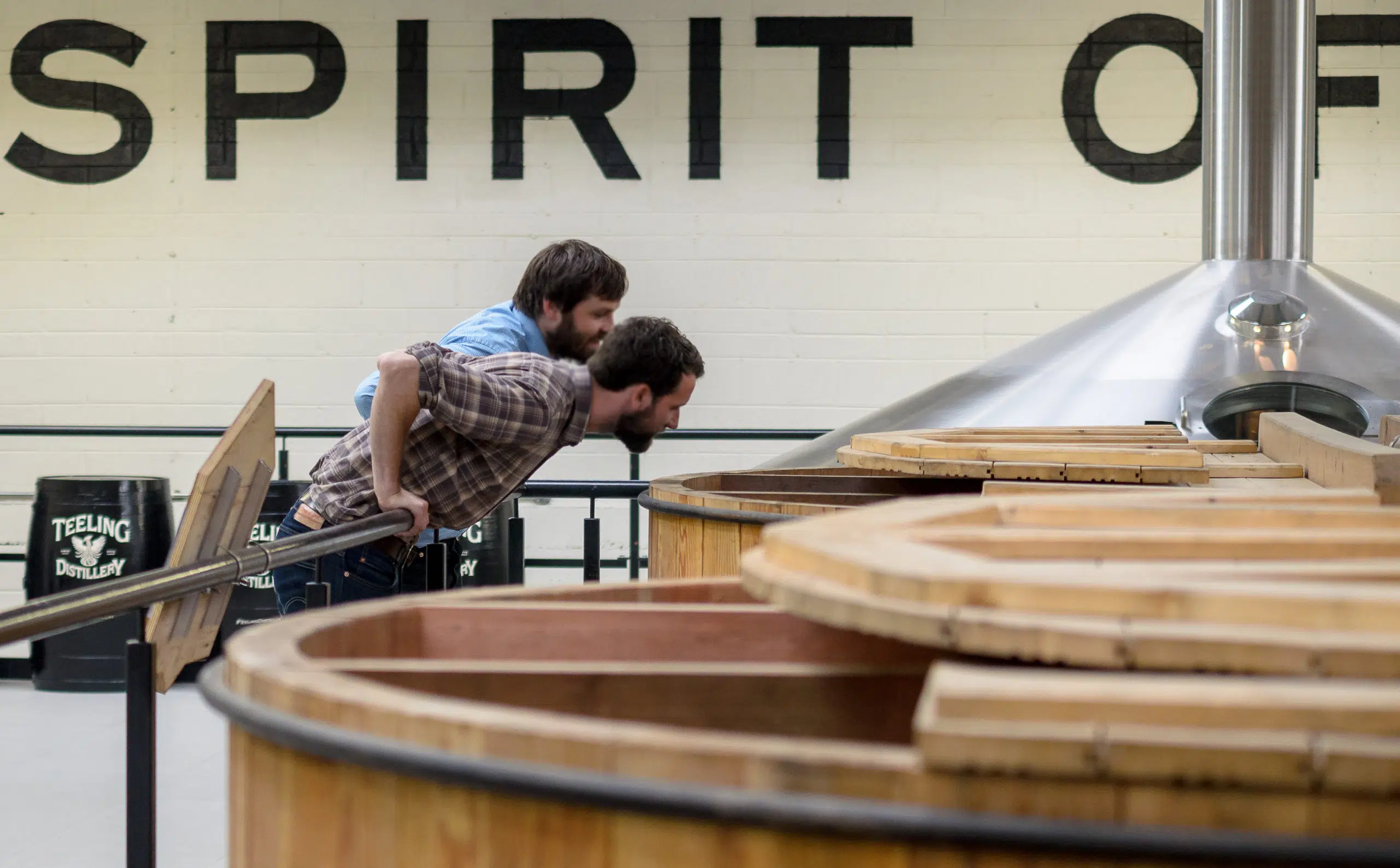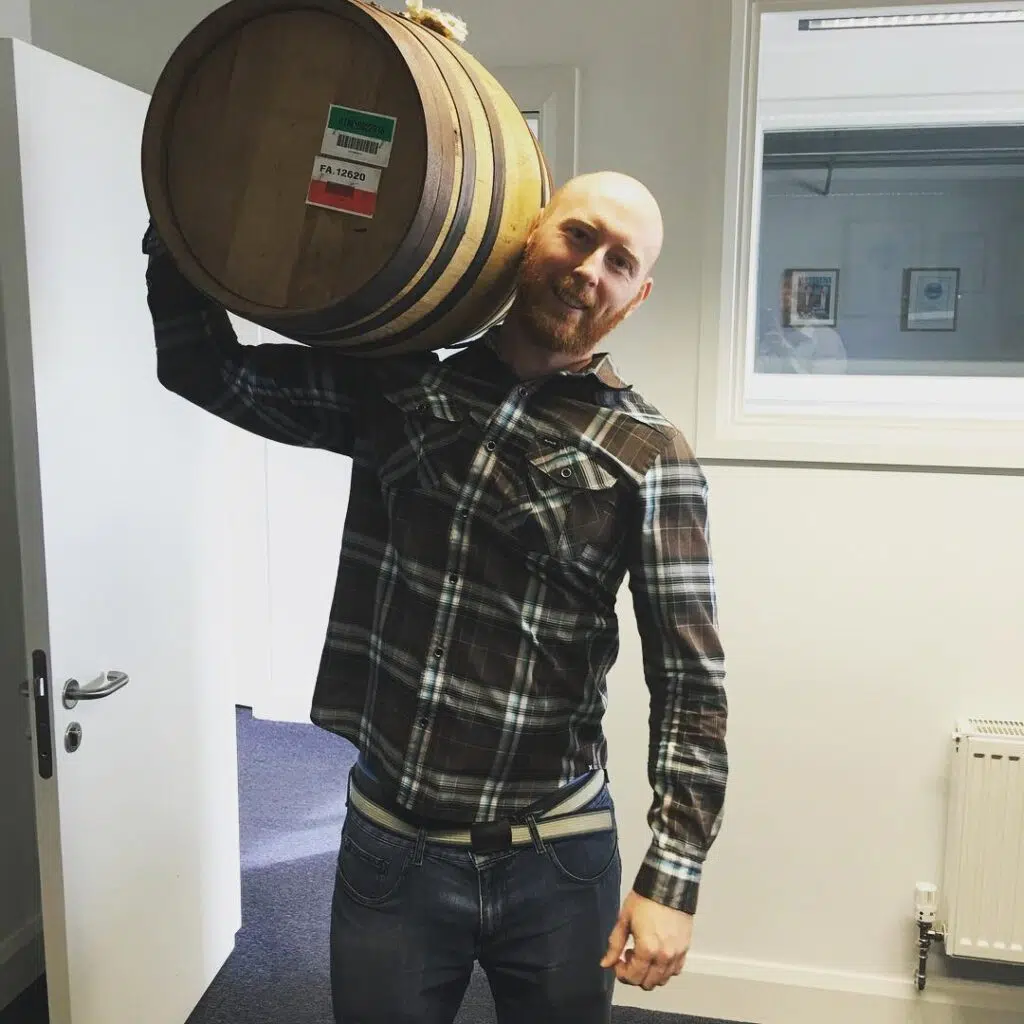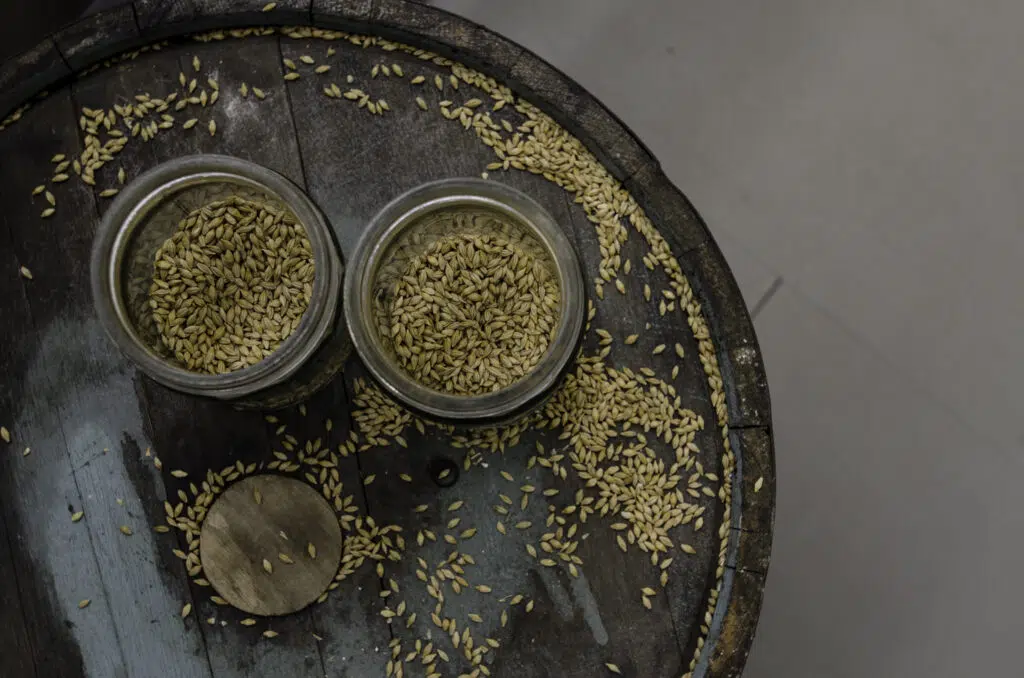A Distiller’s Diary – The Science of Distillation
Ever want to take a peak at a Distiller’s Diary?? Read on below for an exclusive sneak peak into Paul’s “Distiller’s Diary”…
The basic process of making spirit hasn’t changed much over the years. But our understanding of how the process works and the science behind it has changed dramatically. When studying for my MSc in brewing and distilling I read countless research papers and many ponderous tomes on the subject. As I write this, the spirit still is about to reach its final cut point giving me about 45 minutes, so prepare yourself for a crash course on the Teeling method of spirit production with some science for good measure.
Here at Teeling we use only 3 ingredients to produce our spirit – water, barley and yeast. Traditionally two types of barley have been used to make whiskey – distillers malted barley and raw barley. Distiller’s malt is produced at low temperatures to preserve its levels of enzymes and starch. While this process makes it great for producing alcohol it lacks some of the flavours you would find in malts used for beers that have been stewed or roasted to bring out more flavours. Before I found my true calling as a distiller I worked in a large brewery and was familiar with a wide range of these brewing malts. I toiled in the lab for days setting up numerous 10 litre trial mashes with varying percentages of these malts before scaling up to our brew house to produce a range of brews with the different characteristics that carry forward to the spirit, for example Crystal malt added sweetness/fruit flavours while chocolate malt added roasted/chocolate notes – we are experimenting with a range of these specialty malts at Teeling.
The first two ingredients (water and barley) are combined in our mill to produce the mash. Unlike most distilleries we have a conditioning mill where the grains are pre-hydrated before being crushed in the milling chamber. This type of mill has a few advantages – it doesn’t produce any dust, allowing tours to see the mill in operation, it is quieter than a dry mill so if I am talking people through the milling process they can actually hear what I am saying and because the grains are hydrated as soon as they enter the mill, with conversion of the starch to fermentable sugars beginning immediately.
From our mill the now crushed grain and water form a porridge that is pumped into the lauter tun. Here we control the temperature of the mash to 64.8 °C via the hot water we hydrate the grain with in the mill. The temperature of the mash is critical for the natural enzymes present in the malted barley to convert the starch to fermentable sugars that our yeasts can convert to alcohol. We will let the mash rest here for one hour allowing the enzymes time to work. As the mash rests the crushed hulls of the barley settle and form a natural filter bed. We then suck out the sugary water now known as wort. A long, long time ago in a county far, far away (Cork) I studied a BSc in microbiology and spent several years working in microbiological laboratories. So for me this is where things get really interesting, fermentation. The wort from our lauter tun is too hot for yeast to survive. The last thing I want to do is cause my yeast any stress so the wort must be cooled to 20°C to allow growth and multiplication. Happy, healthy yeast is the key to successful fermentation.
We trialed many different strains of yeast including champagne, ale, cider and wine before settling on a blend of distillers yeast and South African white wine yeast. The distillers yeast allows efficient conversion of the sugars to alcohol while the white wine yeast produces fruity esters that impart a tropical fruit, citrus flavour to the wort. We start every fermentation in our wooden washbacks, whereas many distilleries today only utilise stainless steel. The nature of wood means these are never sterilised and have a resident lactic acid bacteria which can utilise sugars the yeast can’t producing fruity esters of their own. Lactic acid bacteria can also utilise components of dead yeast cells to produce compounds like gammadecalactone which is found in apricots. After 24 hours the fermentations are moved to our steel fermenters to make way for two new brews. After another 48 hours in the steel fermenters the fermented liquid now known as wash is ready to be distilled and is a mixture of alcohol (8%), water, flavour molecules (congeners) and yeast.
At this point I have now killed my supposed friends the yeast, but there sacrifice has not been in vain. They have given their lives to produce the ethanol I am currently distilling. Ethanol has a boiling point of 78.4 degrees Celsius while water has a boiling point of 100 and thus it can be said that ethanol is more “volatile” than water. As we apply heat to the still the more volatile ethanol will vaporise at a faster rate than the water allowing us to collect the condensate at a higher ABV than the charge of the still. The same can be said of the congeners in the wash, which determine the character of the spirit. We can control the level of congeners in the spirit using “cut points” which divide the condensate into 3 portions, heads cut, spirit cut and tails cut. When distilling a new recipe I can take samples of the spirit as it’s running off from our spirit safe. The distilling team tastes the samples and when we are happy with the flavours in the spirit we can input the cut points in the computer which is constantly monitoring the ABV of the spirit being produced.
Going forward then the computer will monitor the ABV and automatically make the cuts at the same point in subsequent runs. The use of automation here helps keep a balanced process with roughly the same volume of spirit being produced daily which in turns helps keeps the quality consistent. While automation can help us with consistency/safety, I still record all spirit leaving the site in a jar with my thermometer and a hydrometer as it has always been done. Of course I have to wet my whistle to make sure the quality is up to our high standards. At Teelings we do this process three times (triple distillation) to bring the ABV from 8% in the wash to 83% in the new-make spirit. In my opinion, compared to double distillation, more low volatile congeners are removed from the spirit and as such the medium volatile congeners, the esters produced by the yeast, have more influence on the flavour in the final spirit. Each brew gives us 1200 liters of pure alcohol which I wave goodbye to as its transported to our maturation site for filling in various casks to begin its hibernation.
I have been distilling here two years now and it’s really exciting for me to think in another year I will be able to taste the fruits of my labour. I hope you found this enlightening and really I could write all night on the matter but if you’ll excuse me the pot ale needs discharging and the spirit transferring.
Join the conversation and find out more:
@TeelingWhiskey | #SpiritofDublin
Facebook
Instagram



